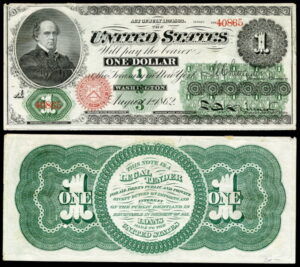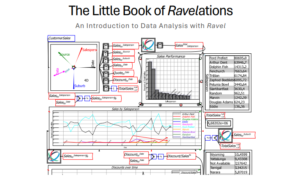Bank regulation and the creation of greenbacks… The US free banking era started in 1837 when the second Bank of the United States dissolved after Congress failed to renew its charter. While the Bank of the United States was not a central bank, it was the closest such bank in the US at that time. It was a private bank, Congressionally chartered, had branches in most states, and by the late 1850s issued about 20% of all the money in use.
Their very success made them a target of politicians who preferred all banks be state banks, and felt this national bank was taking too much of their business. In a fairly protracted political fight between President Andrew Jackson and Senator Henry Clay, Jackson won, the bank was dissolved.
————————————
This post is part of a larger series and sub-series.
Here is a link to the series: The history of banks and banking regulation
and to the sub-series: United States Banking and Bank Regulation History
————————————
For the next 25 years, all the money in the United States was issued by state banks, and while it was all denominated in dollars, not every dollar banknote was worth a dollar. Some were, while others were worth ninety cents. It had to do with the reputations of the various banks.
It was a chaotic patchwork system with shops listing which banknotes from which banks they would accept and what value they would accept them for.
Then, the question over whether Texas could be admitted to the union as a slave state, or not, lit the fuse that started the US civil war.
At first, the Union sold bonds to fund the war effort, but the war was not as quick and simple as many hoped. The government met with New York bankers and realized they need to spend more for the war effort than America’s banks could loan them.
So they created a full fiat, not backed by gold, US dollar. Green ink was chosen as it was thought it would fade less over time and that it would be harder to counterfeit. These bills became known as greenbacks.
Greenbacks were authorized in two lots:
- The Legal Tender Act of 1862 authorized the issuing of $150 million.
- The Legal Tender Act of 1863 authorized the issuing of $300 million more.
A national currency needs a national banking system. To that end, the National Banking Act became law on February 25, 1863. It authorized the creation of national banks that would be regulated by the federal government. For the first time, bank regulation was a real thing in the United States. The old state bank banknotes were removed from the system through taxation.
I wish to express again, these greenbacks were full fiat, not backed by gold. Although the US government did promise they could be redeemed for gold later after the war ended.
Considering how much opposition to national banks and the greenbacks there was from state bankers, they were surprisingly well-received by Americans.
For the first time in decades, for many people for the first time in their lives, they had money that was accepted everywhere and had the same value everywhere. One dollar was worth one dollar no matter where you got it or where you took it.
The money was so popular (except in California and Oregon where they were rejected outright), that a political movement came into being.
The Greenback Movement (1868 to 1888) advocated for staying on the fiat currency, over their perception that it had stabilized the financial system. The fiat currency had allowed the money supply to be expanded such that it had increased economic activity, increased production, and resulted in higher demand for farm output (calories were still scarce in those days).
This is an interesting contrast to people today who protest that we should return to the gold standard.
Early in 1879, the US government started converting greenbacks to gold as they promised (although it was now 14 years since the civil war ended), but far fewer people than expected showed up to redeem their greenbacks.
They had proven so popular that they earned a reputation for being “good as gold“, which was actually not true.
The value of greenbacks had devalued against the value of gold (similar to modern fiat money) but farmers preferred it anyway as inflation worked in their favour, allowing them to pay back debts with dollars that had lost some value.



